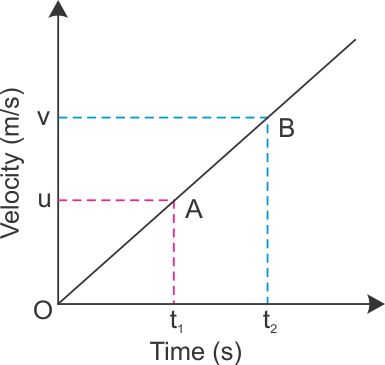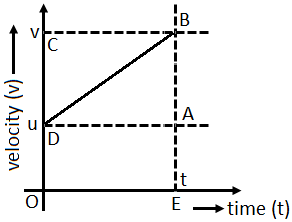Ask questions which are clear, concise and easy to understand.
Ask QuestionPosted by Varsha Kanwar 5 years, 2 months ago
- 2 answers
Yogita Ingle 5 years, 2 months ago
a) Naphthalene balls disappear with time without leaving any solid.
Naphthalene undergoes sublimation easily i.e., the change of state of naphthalene from solid to gas without the intervention of the liquid state. Thus, naphthalene balls keep on forming naphthalene vapours which disappear into the air with time without leaving any solid.
b) We can get the smell of perfume sitting several metres away.
Perfume has a higher degree of vaporization and its vapour diffuse into the air easily. Gaseous particles possess high speed and move very rapidly in all directions. When perfume is sprayed, its particles diffuse into the particles of air at a very fast rate and reach our nostrils. This enables us to smell the perfume from a distance.
Posted by Varsha Kanwar 5 years, 2 months ago
- 3 answers
Nitin Tripathi 5 years, 2 months ago
Gaurav Seth 5 years, 2 months ago
Temperature in Kelvin = Temperature in oC + 273 Substitute the given value in the equation and then calculate the other unknown value.
a) 25° C = (25 + 273) K
= 298 K
b) 373° C = (373 + 273) K
= 646 K
Posted by Pushkar Kamble 5 years, 2 months ago
- 2 answers
Nandini Sharma 5 years, 2 months ago
Sarah Mariyam 5 years, 2 months ago
Posted by Sanjana Satyala 5 years, 2 months ago
- 1 answers
Gaurav Seth 5 years, 2 months ago
A n s w e R :
Given that, Speed = 3 × 108 m/s
Time taken = 5 × 60 s = 300 s
We know that Distance = Speed × Time
= 3 × 108 m/s × 300 s
→ Distance = 900 × 108 m = 9 ×1011 m
Posted by Khushbu Shoeran 5 years, 2 months ago
- 1 answers
Yogita Ingle 5 years, 2 months ago
Mass of solute = 40g
Mass of solvent = 320g
Mass of solution = Mass of solute + Mass of solvent
= 40g + 320g
= 360g
Mass percentage of solution = (Mass of solute/Mass of solution)x100
= 40 / 360 x 100
= 11.1%
Posted by Varsha Kanwar 5 years, 2 months ago
- 2 answers
Yogita Ingle 5 years, 2 months ago
To concert Kelvin scale into Celsius scale we have to subtract 273 so
(a) 293K = 293 - 273=20 ºC,
(b) 470K = 470-273 = 197 ºC
Posted by Varsha Kanwar 5 years, 2 months ago
- 1 answers
Yogita Ingle 5 years, 2 months ago
The gases can be converted into liquids by bringing its particles closer so atmospheric gases can be liquefied either by decreasing temperature or by increasing pressure.
Posted by Varsha Kanwar 5 years, 2 months ago
- 1 answers
Yogita Ingle 5 years, 2 months ago
The temperature remains constant during the change of state because the heat energy which is supplied to change the state of matter is used in breaking the intermolecular forces and other attractive forces. Hence the temperature remains constant as all the heat is used up and no external heat is released or absorbed.
Posted by Varsha Kanwar 5 years, 2 months ago
- 1 answers
Yogita Ingle 5 years, 2 months ago
The physical state of water at 250 degrees Celsius ( 250 ºC) is a gaseous state. As we know that the boiling point of water is 100ºC. So at 100ºC the physical state of water is liquid.
Posted by Varsha Kanwar 5 years, 2 months ago
- 1 answers
Yogita Ingle 5 years, 2 months ago
a) Temperature on Kelvin scale = temperature in Celsius scale + 273
300 = temperature on Celsius scale + 273
Temperature of Celsius scale = 300 - 273 = 27°C
Hence, a temperature of 300K on kelvin scale is equal to 27° C on Celsius scale.
b)Temperature on Kelvin scale = temperature in Celsius scale + 273
573 = temperature on Celsius scale + 273
Temperature of Celsius scale = 573 - 273 = 300°C
Posted by Khushbu Shoeran 5 years, 2 months ago
- 1 answers
Yogita Ingle 5 years, 2 months ago
| Sl. No. | Differentiating Property | Compound | Mixture |
| 1 | Definition | Compound are substances which can be formed by chemically combining two or more elements. | Mixtures are substances that are formed by physically mixing two or more substances. |
| 2 | Types | Compounds can be of three types, which are: covalent compounds, metallic compounds and ionic compounds.
Note: Compounds can be classified as organic compounds or inorganic compounds depending on the presence of carbon in the molecular structure. |
Mixtures are mainly of two types i.e. homogenous mixtures and heterogeneous mixtures. |
| 3 | Substance Category | Compounds fall under pure substances. | Mixtures can be categorized as impure substances. |
| 4 | Composition Details | The chemical composition of compounds is always fixed. | A mixture can have a variable composition of the substances forming it. |
| 5 | Nature | Compounds are always homogeneous in nature | Mixtures can either be homogeneous or heterogeneous in nature. |
Posted by Abhoy Das 5 years, 2 months ago
- 0 answers
Posted by Palak Lakhotiya 5 years, 2 months ago
- 0 answers
Posted by Gawri Sunil 5 years, 2 months ago
- 2 answers
Posted by Khushbu Shoeran 5 years, 2 months ago
- 3 answers
Sarthak Prasad 5 years, 2 months ago
Yogita Ingle 5 years, 2 months ago
The important characteristics of particles of matter are the following:
- The particles of matter are very, very small.
- The particles of matter have space between them.
- The particles of matter are constantly moving.
- The particles of matter attract each other.
Harshita Sachdeva 5 years, 2 months ago
Posted by Khushbu Shoeran 5 years, 2 months ago
- 1 answers
Meghna Thapar 5 years, 1 month ago
- Nervous tissue –
The brain, spinal cord and nerves are all composed of the nervous tissue. The cells of this tissue are called nerve cells or neurons.
The neuron consists of 3 parts:
- The Cyton or Cell body - It contains a central nucleus and cytoplasm with deeply stained particles called Nissl’s granules.
- Dendrites - The dendrons are short processes arising from the cyton and branches into dendrites.
- Axon - It is a single, long cylindrical process which forms fine branches terminally. It has a swollen structure at its end called synaptic knob or bouton. It is also termed as the nerve fibre.
Posted by Khushbu Shoeran 5 years, 2 months ago
- 1 answers
Meghna Thapar 5 years, 1 month ago
Complex permanent tissues –
Complex tissues are made of more than one type of cells. All these cells coordinate to perform a common function. Xylem and phloem are examples of such complex tissues. They are both conducting tissues and constitute a vascular bundle.
- Xylem –
Xylem is a vascular and mechanical tissue. It consists of tracheids, vessels, xylem parenchyma and xylem fibres. Except xylem parenchyma, all xylem elements are dead and bounded by thick lignified walls. Tracheids and vessels are tubular structures which transports water and minerals vertically. The parenchyma stores food and helps in the sideways conduction of water. Fibres are mainly supportive in function.
ii. Phloem –
Phloem contains tubes but performs no mechanical function. Phloem is made up of four types of elements: sieve tubes, companion cells, phloem fibres and the phloem parenchyma. Sieve tubes are tubular cells with perforated walls. Phloem is unlike xylem in that materials can move in both directions in it. Phloem transports food from leaves to other parts of the plant. Except for phloem fibres, phloem cells are living cells.
Posted by Shyam Shubham Yadav Yadav 5 years, 2 months ago
- 0 answers
Posted by Tanu Shree 5 years, 2 months ago
- 1 answers
Yogita Ingle 5 years, 2 months ago
- Nervous tissue stimulates and transmits the stimulus very rapidly from one place to another within the body.
- The brain, spinal cord and nerves are composed of the nervous tissue.
- A neuron consists of a cell body which comprises of nucleus and cytoplasm, from which long thin hair-like parts arise.
- The neuron has a single long part, called the axon, which transmit the nerve impulse to body parts.
- The neuron has short, branched parts called dendrites.
- Many nerve fibers combine together by connective tissue and form a nerve.
- Nerve impulse enables animals to move rapidly in response to stimuli.
Posted by Nirali Tak 5 years, 2 months ago
- 1 answers
Sudhakar Sahoo 5 years, 2 months ago
Posted by Shreya Mandaviya 5 years, 2 months ago
- 1 answers
Mehbub Ahmed 5 years, 2 months ago
Posted by Rupesh Nehra 5 years, 2 months ago
- 3 answers
Palak Pandey 5 years, 2 months ago
Posted by Atharva Upadhyay 5 years, 2 months ago
- 1 answers
Yogita Ingle 5 years, 2 months ago
The mole is the amount of substance that contains the same number of particles (atoms/ ions/ molecules/ formula units etc.) as there are atoms in exactly 12 g of carbon-12.
Mass of 1 mole of a substance is called its molar mass.
Posted by Somya Jha 5 years, 2 months ago
- 0 answers
Posted by Ayushi Mehta 5 years, 2 months ago
- 1 answers
Saina Yadav 5 years, 2 months ago
Posted by Amrit Kaur 5 years, 2 months ago
- 3 answers
Gaurav Seth 5 years, 2 months ago
Consider a velocity-time graph for a uniformly accelerated body starting from rest is represented as follows.

u: velocity at time t1
v: velocity at time t2
If acceleration is represented as a ,then, acceleration is defined as the rate of change in velocity.

This is first equation of linear motion.
Harleen Dhaliwal 5 years, 2 months ago
Posted by Yash Gupta 5 years, 2 months ago
- 1 answers
Aditi.T Rajesh 5 years, 2 months ago
Posted by Khushbu Shoeran 5 years, 2 months ago
- 1 answers
Gaurav Seth 5 years, 2 months ago
When a fireman holds a hose, which is ejecting large amounts of water at a high velocity, then a reaction force is exerted on him by the ejecting water in the backward direction. This is because of Newton’s third law of motion. As a result of the backward force, the stability of the fireman
decreases. Hence, it is difficult for him to remain stable while holding the hose.
Posted by Khushbu Shoeran 5 years, 2 months ago
- 1 answers
Almi Aami 5 years, 2 months ago
Posted by Khushbu Shoeran 5 years, 2 months ago
- 2 answers
Gaurav Seth 5 years, 2 months ago
Consider an object is moving with a uniform acceleration “a” along a straight line. The initial and final velocities of the object at time t = 0 and t = t are u and v respectively. During time t, let s be the total distance travelled by the object. In uniformly acceleration motion the velocity – time graph of an object is a straight line, inclined to the time axis.

OD = u, OC = v and OE = DA = t.
Let, the Initial velocity of the object = u
Let, the object is moving with uniform acceleration, a
Let, the object reaches at point B after time t, and its final velocity becomes, v.
Draw a line parallel to x-axis DA from point, D from where object starts moving.
Draw another line BA from point B parallel to Y-axis which meets at E at y-axis.
Second Equation of Motion: Distance covered by the object in the given time “t” is given by the area of the trapezium ABDOE.
Let in the given time (t), the distance covered by the moving object = s
The area of trapezium, ABDOE.
Distance (s) = Area of ΔABD + Area of ADOE.
s = ½ x AB x AD + (OD x OE)
s = ½ x DC x AD + (u x t) [∵ AB = DC]
s = ½ x at x t + ut [∵ DC = at]
s = ½ x at x t + ut
s = ut + ½ at².
It is the expression gives the distance covered by the object moving with uniform acceleration.
Almi Aami 5 years, 2 months ago

myCBSEguide
Trusted by 1 Crore+ Students

Test Generator
Create papers online. It's FREE.

CUET Mock Tests
75,000+ questions to practice only on myCBSEguide app
 myCBSEguide
myCBSEguide
Ananya K 5 years, 2 months ago
0Thank You